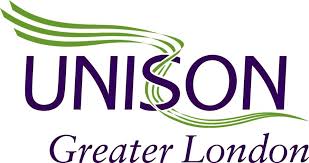Barnet Alliance for Public Services - residents, local organisations and trade unions campaigning for high quality public services in the London Borough of Barnet.
Staff Login
Residents’ Questions to Council Meetings
Cabinet Resource Committee, 4th November 2013
All questions below are answered in italics by Cllr. Daniel Thomas
From Tirza Waizel
Q1. Is the £3 million mentioned in the NSCSO Full Business Case as money that was earmarked for IT upgrade, part of the £16.1 million you paid Capita from our reserves or in addition to it?
A1. The £3m of capital spend identified by the Council to be spent on the IT upgrade in 13/14 is included in the £16.1m contract sum. I would add that the £16.1m paid to Capita has not come from Council Reserves (as your question alludes). The £16.1 m was included in the £320m agreed by Cabinet in December 2012 – there has been no additional contribution from Reserves.
Q2. Why does the council pay for the redundancies caused by the OBP outsourcing in the first 18 months of the contract, when you told us in reply to Mr Dix’s question in November 2012, that it will be Capita who would pay for the redundancies?
A2. As outlined to Mr Dix, Capita will pay for the redundancy costs in relation to all the transferring staff (based on the TUPE lists supplied by the Council during the bid process) and the reduction of that staff base over time.
There is one caveat to this – that relates to the Council’s project management team. This team works on projects commissioned by the Council. When they transferred to Capita they transferred with a full portfolio of work. For the first 18 months, if the Council unilaterally decides not to undertake any more projects, and by implication there is no work for them to do, and if as a consequence they are made redundant, then Capita have the right to ask us to pay their redundancy costs. This is an entirely reasonable agreement – by being clear, we’ve ensured that Capita didn’t ‘price in’ the risk. I can also assure you that the risk of there being no project work commissioned by the Council is low to zero.
Contract Monitoring Overview & Scrutiny committee, 9th October 2013
See also: Mrs. Angry’s report “Capita comes to the Town Hall” and Mr. Reasonable’s report “A Wake-up Call for Capita”
All questions below are answered in italics by Ash Tadjrishi
From Janet Liefer
Q1. How many service users and carers attended the service users and carers engagement events organised by Your Choice Barnet? (Refers to 1.3 Summary of the delivery unit’s performance “YCB also held several engagement events with service users and carers.”)
A1. YCB have experienced varying attendance at events depending on the type of meeting and purpose. In the first quarter over 50 people attended events YCB organised.
Q2. Has Your Choice Barnet raised the amount service users are charged for services from April 2013 and if so what is the percentage raise? (Refers to 3.2 How is YCB achieving against its Performance Framework? YCB PI 5)
A2. The small number of YCB service users on direct payments, will have seen an increase, as VAT has to be charged against the rates set by the Council. In addition some Supported Living customers will have seen an increase from £15 to £15.20 per hour as the Council increased the rates payable for this service. All other services are charged in accordance with the Council’s policy and have not seen an increase.
Q3. On what basis are service users moved down to a lower level of service? (Refers to 3.2 How is YCB achieving against its Performance Framework? YCB PI 6)
A3. The level of service is dictated by the support plan and the number of service hours allocated is agreed at the needs assessment between client and the social worker employed by the Council and YCB delivers these as contracted. Historically in some cases YCB has over-provided hours or services against those set by the Council, however, now YCB is paid based on use we can only provide those agreed by the social worker team.
Q4. How many of the staff employed at Supported Living and Community Space are agency staff and sessional staff? (Refers to 3.2 How is YCB achieving against its Performance Framework? YCB PI 11 & 12)
A4. In addition to YCB employees, the staff breakdown for quarter 1 is as follows: -Supported Living employed 6.90 full time equivalent agency staff and 10.55 full time equivalent sessional staff. -Community Space employed 1.82 full time equivalent agency staff and 2.61 full time equivalent sessional staff.
Q5. What will happen to YCB if the income generated does not provide long term financial viability? (Refers to 5.3 Risk Overview – Risk Commentary for YCB (1))
A5. The Council and YCB are implementing measures to reduce YCB costs and to raise income. It is expected that a sustainable business model will be the outcome of these changes, which are detailed in the YCB Operational Plan.
Q6. What will happen to present services if there is a financial shortfall at the present time? (Refers to 5.3 Risk Overview – Risk Commentary for YCB (2))
A6. This is factored into the current YCB Operational Plan, so there would not be any short-term impact on service delivery.
Q7. Is Community Space offering a service to its service users on a Friday at the Community Space Centre at present, as it has done up to now? (Refers to 5.2 Change projects commentary “no changes to service delivery”)
A7. The decision to close the Community Space centre on a Friday was taken and enacted prior to the service transferring from the Council into YCB and this has continued. Services are still delivered but from alternative locations.
Q8. The CQC inspection of Supported Living on 29 January 2013 observed that “People were cared for by staff who were not supported to deliver care and treatment safely and to an appropriate standard.” CQC stated that standards of staffing required improvement. What steps have been taken to remedy this? (Refers to 1.3 Summary of the Delivery Unit’s Performance)
A8. YCB completed an action plan for the CQC covering all of the weaknesses identified; as reported CQC carried out a subsequent visit on the 9th September where they confirmed that they were satisfied that we had addressed all of their previous concerns and met all five standards.
From Tirza Waisel
Q1. What level of structured activities is currently maintained in Community Space day centre in comparison to past level and range of activities? How does that relate to the staffing levels of this setting? The question refers to reports from parents about cancellation of day centre attendance ‘due to shortage of staff’ (latest example occurred on 16 & 17 of September). Please provide a list of the activities offered now and in comparison to those offered prior to YCB commencing service provision, the frequency they are offered to service users and how many take part in each.
A1. (Data on activities and staffing is being confirmed and will be supplied separately) The level of activities being maintained at the Community Space Day Centre is in accordance with the assessment of individuals needs and these are reviewed at a minimum every 12 months. It would not be appropriate to compare activities as individuals’ needs or assessments may have altered this position.
Q2. How does the current level of structured activities and day centre days offered relate to the individual service users’ identified needs? (Both questions refer to 5.2 Change projects commentary “no changes to service delivery”)
A2. The level of structured activities and day centre days is delivered in accordance with the annual assessment undertaken by the Council. This is the service that YCB are commissioned to deliver.
Q3. How many member of staff have left their post in the last year, what percentage is it from the workforce in Supported Living and Respite services, and what measures are being taken to ensure permanent working relationship between service users and their support workers to facilitate trust building and continuation of care? (Refers to 3.2 How is YCB achieving against its Performance Framework? YCB PI 11 & 12)
A3. Because YCB has made a series of changes, including the offer of voluntary redundancy, staff turnover has been higher than it would normally be in supported living and the respite service. 28.5% of the supported living workforce left and 35.7% of the respite workforce also left. Where possible YCB has, and will continue to, redeploy staff to try and maintain existing relationships. Where this has not been possible YCB will implement changes over as long a period as possible to minimise any disruption. In some cases YCB has contracted agency workers who have worked with YCB service users for long periods of time to assist with the transition and has also explored filling vacancies with existing agency and sessional staff where they are suitable for the role, again seeking to minimise the level of change.
Q4. What type of safeguarding alerts had been raised and how were they investigated and dealt with? This question refers to two known incidents, one of a service user falling into a manhole in one day centre and the other of a resident chocking on their food in a Supported Living setting?
A4. Of the two incidents referred to, safeguarding reviews were undertaken by the Council as part of their safeguarding procedures.
Q5. What were the conclusions regarding the causes of the accidents and what lessons have been learned and implemented? (The last 2 questions refers to PI3 p. 98)
A5. In respect of the manhole incident the landlord of the property was tasked to address this and ensure the quality of the premises is maintained, in respect of the other incident no lessons were identified.
Housing Placements and Allocations special meeting, 16th September 2013
From Julian Silverman
I am a member of the Barnet Alliance for Public Services.
BAPS does not have a stated position on the question of housing allocation and placement.
Our only allegiance is to the community.
As members of our community, we would not wish to be in the position of having to select which ones of us deserve to receive medical assistance or care when we cannot look after ourselves, or education or somewhere to live. These are services the whole community is entitled to and were always intended to be provided for and by the community as a whole.
A housing placement or allocations policy is forced upon councils. It is a way by which people with homes [sometimes very big ones, and several of them] make rules for what to do with people without:
Barnet has been more diligent in this task than most. They reckon they have solved the problem with a stroke of the pen.
They boast [in the growth document, appendix 3]: The council has been proactive in progressing housing policy changes, and has put in place a new housing allocations scheme which targets access to social housing to those in the greatest need. This has reduced the number of households on the housing register and waiting for housing from over 18,000 to 1,430.
This is Barnet-speak for “we’ve abolished the waiting list”: a bold act that no other council in the country had the sheer nerve to do.
But abolishing the list has not abolished the 18,000 households in need of a home.
The report tells us there were some 1400 households actually homeless or in temporary accommodation and less than 700 places for them
Meanwhile, the Barnet population is set to rise by over 5% by 2016: more people than Barnet knows what to do with [Social housing tenants, like other people, get older and older, will keep on having babies and are not dying off quickly enough].
And this is going on everywhere. More people and no use for them. No pay, low pay and benefit cuts drive them from central London to Barnet to the great enrichment of West End landlords and developers, and Barnet simply dumps tenants it can’t deal with on to someone else.
The council is introducing a series of measures to restrict access to what it does have: it is raising rents, has already agreed to impose council tax on the poorest. Instead of a fairly objective ‘points system, it has set up a banding system [top band for ex-army etc.] It is now to take away from tenants any say in deciding what is a ‘suitable’ home for them. A housing officer will tell them and it will be ‘one choice or you’re out’.
And in case you’re happy with it, they are bringing in fixed term tenancies, so as to be able to eject you or move you on or offload you on to a private landlord. In previous years if you were literally without a home they would place you in temporary accommodation and put you on the waiting list. Now Barnet, like other councils, is simply expelling its homeless and placing them in the hands of unregistered private landlords. These landlords can be people with spare bedrooms, who, instead of a bedroom tax, are offered £1500 [for a single room] and a tenant + rent, or they can be people with surplus capital who have bought up houses as buy-to-let and who will take tenants on benefit on suffrance, or they can be huge corporations like Graingers who manage 40,000 properties in the UK and Germany
Barnet Homes are actually taking homes away from ‘social housing’ and offering tenants £29,000 to release them on to the market.
But the two centuries’ experience has shown us that the market is not fit to deal with the housing problem. It is just not profitable to build homes for ordinary people. Hence the need for social housing [as opposed to commercial housing].
The problem was well expressed by the late leader, Lynne Hillan who excused the council for not fulfilling even its newly reduced quota of ‘affordable’ housing in this way: “…we rely solely on private developers to provide affordable housing and all across the country development plans have come to a full-stop. They can’t borrow money and there is no guarantee they will be able to sell the properties at the end.”
The profit system cannot provide homes for ordinary people.
Now they are beginning to sell houses again. But not for us! House prices are already rising 5 times the rate of wages. The main benefits of the ‘recovery’ go to speculators [i.e. money changing hands rather than homes provided]. Barnet has just agreed to let Barrett Homes build tower blocks up to 29 storeys high dumped on top of London’s major nature reserve. Out of 2,000 units only 500 will be ‘affordable’. [And 'affordable' in Boris' definition means for those on £74,000 and above!]. Other new developments mean turfing out squatters from the wreckage of an abandoned football ground, and selling off land which had been designated as for public use.
So long as Barnet refuses to build social homes itself, refuses to take back Barnet Homes and refuses to recruit its own direct labour force it will both continue to lose money to unscrupulous builders and add to the unbearable misery of people in bad private or public housing or squatting in insanitary conditions etc. Social housing was created as a public service for all, like the Health Service. But the developers need the council more than we need them. The council is in a position to negotiate from a position of strength to ensure that developers build social housing and genuinely affordable housing.
This is an emergency. There is an urgent need to make sure that Barnet’s many un-occupied and under-occupied homes are made available to those in urgent need. Barnet can call upon the power where there is a “compelling case in the public interest”, to bring in compulsory purchase orders.
The same applies to land. There are large expanses of private land, much of it grabbed from common land, which are unused or used by very few people for purposes that do not contribute to the public welfare.
90% of Britain’s population take up no more than 6% of the land. Rural land is worth £5k an acre, development land £500,000 – £1 million. This is one of the major causes of the problem. 2/3rds of UK land is in the hands of 0.7% of the population, who pay no council tax and are subsidised up to some £23,000 each, largely to do nothing with it. They own most of London too. The West end belongs to the Royal Family and the Duke of Westminster. Chalk Farm to Eton College and Tufnell Park to St Johns College, Cambridge. Who owns Barnet? Do we even know? A council which was genuinely concerned would call to be given back the c. £10 million annually which is taken from the Housing Revenue Account to pay interest on housing schemes which finished a generation ago. They would work with others to fund decent and attractive new developments for all who needed them – would recruit an in-house team of experts to advise on cheap and environmentally sustainable building and help develop self-build projects etc.
In housing as in other spheres, if the people who made up the rules were the same people who had to live by them, we could reach rational solutions in everybody’s interest.
Cabinet Resource Committee, 24th June 2013
From Barbara Jacobson
Item 7
1.11 The virement of £0.305m re Electoral Registration from NSCSO to the Assurance Directorate. (Paragraph 9.15.1): Since this virement is coming up for approval now, it couldn’t have been included in the NSCSO contract with Capita, so how does it affect that proposed contract?
1.14 While we may note the spend of £7.183m on Agilisys / Impower, how do you explain that it is more than three times the original estimate of £2m?
• How much has been paid to Agilisys / Impower since the end of April 2013?
• How much will continue to be paid to Agilisys / Impower in the coming months?
• And exactly, precisely, specifically what are they doing for this money?
9.1.3 ‘a shortfall in income in Legal Services’:
•What was the amount of this shortfall?
•Why was there a shortfall?
•Does the shortfall indicate that the assumptions on which the generation of income are based are flawed?
•What is being done to try to ensure there is no shortfall in the next financial year?
9.1.4 ‘underspends … in the Children’s Services (£0.838m) … is primarily due to vacancies, reduced staffing costs and planned savings for 2013/14 being achieved early’ . How were the staffing costs reduced, and what is the amount of money thus saved? What monitoring and safeguards have there been to ensure that reducing costs in this way and by leaving vacancies unfilled has not had any negative affect on the quality of services delivered?
9.3.2 ‘In Adult Social Care and Health, over 56% of service users felt they have choice and control influencing decisions that affect them meeting the target in quarter 4.’
• How many service users are there?
• Why was the target set at 56%?
• What is being done about the fact that 44% of service users don’t feel they have choice and control influencing decisions that affect them?
9.11.1 What exactly were the ‘teething problems with the new contracts’, how did they cause or contribute to the slippage, and what was the slippage and in what works?
9.12.1 Table 14 shows bad debt is £28.905m. Why do these debts arise, what steps have been taken to collect the debt, and why have those steps failed?
9.18.3 ‘The overall costs to deliver the projects contained within Wave 1 are projected to be £1.734m above the original budget.’ Are you saying that the first budget for ‘costs to deliver the projects’ was set in October 2012?
• If not, what was the date of the original budget and what was the figure in that budget for these costs?
9.18.4 What accounts for the projection of higher savings of £53m, e.g. were the initial projections wrong or have other ways been found to make savings and, if so, what are they?
9.18.8 What would have been the approximate cost of the consultation required by law, which the Council failed to undertake?
9.18.9 Why is this information repeated at 9.18.15?
Item 15
2.11, 2.12 What was the final cost of legal services for this arbitration and what was the financial outcome (i.e. how much money was paid to whom)?
4.4 Since anyone using a care home for themselves or their loved ones would like to be certain of the health and safety procedures of such an organization, and especially an organisation previously found to be seriously deficient in these respects, why are the details about Fremantle’s assurances ‘exempt’ from public scrutiny?
4.5 What is the range of ‘a reasonable timescale’?
6.8 Why is it seen as a good thing to reduce the number of ‘public’ beds in order to increase the number of private beds at a time when the council acknowledges a growing ageing population?
From Tirza Waisel
My questions refer to Item 15, paragraph 1 (p. 235) - Recommendations, and to 4.4 (p. 238) – within Risk Management Issues.
I note with disbelief that the Recommendations to Cabinet are to renew the contract with Fremantle and do not refer even in one word to the ‘incident’ mentioned in paragraph 4.4:
‘In May 2013, The Fremantle Trust was advised that it was to be prosecuted under Health and Safety legislation following an incident at Dellfield Court in December 2011 creating a risk of adverse publicity for both parties given the proposals in this report. Both the Police and the Health and Safety Executive decided not to prosecute’.
1. Does the ‘incident at Dellfield Court’ refer to the death of the service user Yuk Kiu Lee as reported in Barnet & Whetstone Press 18 June 2013?
2. Can you clarify who is correct – your report that says ‘Both the Police and the Health and Safety Executive decided not to prosecute’ [my highlighting] or the reporter Daniel O’Brien: ‘…the case to be heard at Willesden Magistrates’ Court on June 25. ‘ - i.e. tomorrow?
3. How do you explain your definition of the risk as per your report, only as ‘a risk of adverse publicity’? Can you identify any further risks following this “incidental” death? Perhaps, for example, a risk to the health and safety, not to say to the life of Barnet residents who use Fremantle facilities?
4. How does Barnet council propose to implement its duty of care towards its vulnerable residents who need care homes in light of this “incident” and the “incident” of the Legionella bacteria found in the water resources of care homes managed by the same Fremantle not long ago?
5. Were there any casualties caused by the Legionella “incident”? Was any resident infected by Legionnaires’ Disease and if there were – did all survive it?
6. What was the outcome of the Notice of Improvement served on Fremantle by LBB?
7. Whose responsibility is it to keep the H&S in Fremantle homes, or for that matter, in any outsourced social care facilities?
8. Please explain to us how come you even consider renewing this outsourcing contract with an organisation who had proved in deeds more than once that it puts Barnet residents in a very real risk?
Cabinet 24 June 2013
From Mr. Reasonable
1. To whom will the Council’s directors on the JV Board owe their fiduciary duty – the Council or the JV?
2. You have stated that if a new fee structure proposed by Capita is not accepted, Barnet will still be covered by the guarantee; if Capita’s proposals for roadside advertising are not accepted, Barnet will still be covered by the guarantee and if the pre selling of graves and extended operating hours for the crematorium (which already takes place) does not generate the additional income, Barnet will still be covered by the guarantee. Why are Capita being so generous to Barnet on what appears to be an entirely one sided contract?
3. Of the £18 million guaranteed benefit from commercial services and installing Barnet as a CSL hub, how much of the £18 million is forecast to come from commercial development across Barnet services and how much will come from the establishment of the CSL hub providing services to other boroughs.
4. Will the CSL hub providing services to other boroughs occupy existing council offices, if so who will assume responsibility for the lease of the building(s) and who will assume responsibility for the remaining lease at the end of the 10 year contract?
5. Have you identified who will become the council’s directors on the Joint Venture Company Board?
6. At Table 8.2 of the business case it states that Capita will make costs savings of 21% which amount to c.£30 million. Is this cost saving (not income growth) more or less than the cost saving (not income growth) forecast in the March 2011 business case?
7. Are there any VAT implications resulting from the creation of joint employment contracts?
8. Why is the compensation payment due to Capita in the event of cancellation of the contract commercially sensitive for the DRS when you were quite prepared to tell me what it was for the NSCSO contract?
From David Ball
(Page numbers refer to the Agenda reports pack pdf document)
1. On page 364-365: “The council is supportive of Barnet maintained schools that wish to convert to academy status and will actively support the development of robust models of governance at the primary level.” Is the council also supportive of Barnet maintained schools that wish to continue being Barnet maintained schools?
2. On page 369: “Where a school has been judged by Ofsted to be inadequate with either ‘serious weaknesses’ or requires ‘special measures’, the government has a clear expectation that in these cases conversion to an academy with a strong sponsor will be the normal route to secure improvement. In circumstances where sponsors are sought, we will engage with the Department for Education to actively seek sponsors…” Why does the council not have confidence in itself to be the strong sponsor? If it has no such confidence, why does the council think it has the ability to identify the right qualities in other organisations if it can’t demonstrate those qualities itself? Shouldn’t the council stand up to the DfE and insist that Barnet can be the strong sponsor that schools need, rather than assist the DfE in undermining local accountability?
Budget & Performance Overview & Scrutiny Committee, 11th June 2013
On Tuesday 11 June 2013, the Budget & Performance Overview & Scrutiny committee of Barnet council will discuss the £275 million Development & Regulatory Services contract for which Capita Symonds was recently recommended as preferred bidder.
Many residents, who are unhappy with the One Barnet Programme of privatization in general, are far less happy with the idea of also handing over this contract, the second-biggest in the One Barnet Programme, to Capita, as well as the New Support Customer Services Organization (NSCSO) worth £750 million (or £320M, depending who you ask).
The following Public Questions have been submitted to the committee, for its meeting on 11 June at 7 pm at Hendon Town Hall. This meeting will be open to the public.
From Mr. Reasonable
1. How much additional gross revenue is required to generate the net income growth share to Barnet of £33.8 million?
2. What circumstances have changed between March 2011 and today to justify a tripling in net income growth?
3. In the March 2011 business case it stated that cost reductions over the period of the contract would amount to £19.7 million yet the Capita bid suggests the savings are now forecast at only £5.3 million or just over £500,000 per annum. What reason has been given for a saving that is only 26.9% of that originally forecast.
4. At Table 7.1 in the business case it illustrates that the DRS staff numbers will stay relatively static over the period of the contract. How can the same number of staff generate so much more additional revenue?
5. At Table 8.2 in the business case it suggests that the £5.3m guaranteed benefit represents a saving of 3.5% of costs. It also says that CSL will retain 13% of the cost savings as their fee. Based on my calculation that means that CSL will receive £31.8 million of the costs reduction. Does this seem to be an equitable split of cost savings?
6. Where will the 21% reduction of core operating costs be made given that staff numbers are virtually unchanged over the period of the contract.
7. At Table 8.2 in the business cases it states that pre-purchasing of graves will deliver additional benefit. As an advance payment for a service to be provided in the future surely it should not be counted as additional revenue?
8. At Table 8.2 in the business cases it states that there will be extended opening hours (at Hendon Cemetery and Crematorium) and additional cremation activities. What opening hours are envisaged and will this mean that local residents will have to wait longer for their loved ones to be cremated unless they choose an early morning or late night slot?
9. How much additional highways advertising will we be forced to endure in order to generate the additional £9.8 million of guaranteed benefit?
10. Of the £6 million investment in IT what is the phasing of that investment over the 10 year contract period, what specific software will be purchased and what mechanism is in place to ensure that the money promised is actually spent?
11. Where specifically will the DRS staff be located?
12. How many posts will be joint employment contracts?
13. What happens if council and Members’ do not approve new services or changes to fee levels or fee structures and how does this impact on the guarantees?
14. If the contract is terminated early how much will Barnet have to pay CSL in compensation?
15. When a planning decision is made, who will make that decision, a Barnet council employee, a Capita employee or an employee of a new joint venture company?
16. Given that the report states that Capita Symonds will maximise the financial and economic benefits of new developments including increase receipts of New Homes Bonus what reassurance can we have that they will not push through massive new housing developments simple because they have a financial incentive to do so?
17. Who will sit on the board of the Council wholly owned company that will manage its interests in the Joint venture company, how many company directors will be created and how much will they be paid?
18. Will directors of the Council wholly owned company sit on the board of the joint venture company and what level of decision making will they have discretion over?
19. What provisions are in place to stop the directors of the council wholly owned company or the joint venture from paying themselves excessive salaries?
20. What is the anticipated level of corporation tax payable by the joint venture company over the ten year period of the contract.
21. On page 12 of the business case it states that one of the reasons why a joint venture was favoured over the original strategic partnership is that “the risks were lower”. Please can you clarify which risks are lower under the JV model and are there any risks that are higher?
22. At page 14 in the business case it states that the council reserves the right to veto salary and rewards schemes above £150,000. Is that £150,000 in total for all DRS staff or £150,000 to any one individual?
23. At the end of the 10 year contract how will the joint venture be dissolved, what liabilities will accrue to the Barnet wholly owned company and how will DRS staff be separated from the staff carrying out duties for other customers?
24. Why are 30 posts to be added in year one only for them to be removed in year two, will the posts to be removed in year two be the individuals are were brought in in year one and what safeguards do existing staff have that Capita will not simple bring in 30 new staff on much lower terms and conditions and then make 30 Council TUPE’d staff redundant at the end of year two.
25. At the end of the contract can the shares in the JV owned by the Barnet wholly owned company be sold to a third party?
26. Why was this report cleared by Trowers & Hamlins not the council’s own legal service (outsourced to Harrow Council) and does this not represent a massive conflict of interest given that Trowers & Hamlins have provided legal advice on the outsourcing project?
27. Why were registration services included in the 2011 business case but excluded from the Capita bid and who will provide registration services when the DRS contract is let?
28. Please can you tell me what, specifically, is the Barnet Observatory?
29. Is there any requirement in the contract for Capita Symonds to hold open meetings with the general public to explain what they are proposing and how the new contract will operate?
30. Will the chairman consider setting up a separate workshop meeting open to and involving members of the public at which a more detailed analysis of the contract proposals can be discussed.
From Azi Khatiri, PhD
1. On Page 5 - “Guaranteed investment: How is the £8.2m being divided between the three identified investment areas? Who owns / controls the intellectual property?
2. On Page 11 - The Joint Venture Approach: The JV diagram is complex, but even so it over-simplifies the situation. The council is represented twice (correctly) as a single entity, but in reality is composed of multiple elements (including the executive, scrutiny, residents/traders, other stakeholders etc.) ‘Services designed around (residents) etc’ but where do they fit into the JV model – What are the other links and dependencies which are not shown on the diagram? In order for there to be better scrutiny of the JV operation, can the linkages to elected Members, residents and other key groups be shown, explaining how it works for them?
3. On Page 13 - the ‘non-competition’ area for the JV covers the administrative areas of 150 councils. Has Barnet Council contacted any of the 150 to discuss their views on the Barnet JV effectively seeking exclusivity for CSL’s service provision in this field?
4. On Page 15 – ‘Weakness minimised’ – Second bullet point refers to the financial arrangements of the JV company but there are no details. In the interests of transparency please provide the information which elected Members have seen in order that they are able to assess the risk of the capability of the JV Company to carry out Barnet work to agreed standards and provide the anticipated financial benefit.
5. On page 16 – The table on this page tends to state how the benefit to the Council will be limited. In the interests of transparency please provide the information which elected members can assess corporate risk about the relationship between the Council and CSL within the JV company arrangement.
6. On Page 22 - First bullet point: How is customer satisfaction to be measured and what happens if this key commitment is not realised as defined?
7. On Page 22 - Fourth bullet point: How is this to be monitored – what are the targets, milestones and reporting framework to inform elected Members?
8. On Page 23 - Second (black) bullet point : ‘Implementation of ‘life event’ based customer contact management processes …’: What does this mean? How will customers’ personal information data be protected – will this be held by CSL?
9. On Page 38 - “Table 8.2 Cost reduction”: What is the actual “13% CSL partner fee” amount? Are there any other elements within the DRS area where other partner fees will be charged?
10. On Page 38 - “Table 8.2 Income increase” : How much of the £18m “guaranteed” benefit will be earned from work undertaken outside Barnet?
11. On Page 36 - ‘Table 7.1 DRS Staff Numbers’: Staff numbers are being reduced in six of the twelve groups. In particular, the Regeneration team is being reduced by 18%. This is a key stated area for CSL as they anticipate significant additional income streams from this activity area. Please provide an explanation be given as to how this will be achieved with less staff?
From Tirza Waisel
1. On Page 40 - Transfer of Assets: What Highways assets will be transferred? Will traffic signs etc. become an asset of the JV company? If not, will the new signs etc. installed by the JV company become the property of the council? Has there been any investigation into possible legal restrictions on the transfer of highway assets to the JV/private company?
2. On Page 49 - “Risk Area – Commissioning Group” -‘Key posts in Commissioning Group not filled’: Are the opportunities open to existing Barnet staff? Apparently work has already started to fill these vacancies. Can you explain how that can be if a decision wasn’t made yet?
3. On Page 10, paragraph 3.1, the report refers to the Council owning shares. How many shares are owned by CSL? How many Shares are owned by Barnet Council?
From Barbara & Bob Jacobson
See attached document (PDF)
From Ron Cohen
1. On Page 4 – “Contractual elements” - ‘Joint venture shareholders agreement’. Please provide the details of this shared arrangement? Is it 50:50 for Barnet work and is this split differently (if so, what) for work elsewhere?
2. On Page 4 – Staffing impacts” – ‘£500 per person per annum… invested in training and development …’ How does this compare with current spend levels within the Council? And how this is being calculated? i.e. is that the cost of training per se or it also includes the time that the employee was supposed to do his regular work?
3. ‘30 additional posts brought into Barnet …’ What are these roles? Are these existing CSL employees? Who pays for these employees?
4. ‘30.1 posts removed from year 2….’ Are they the same staff, does this mean that staff numbers are neutral or is there is a cumulative loss of 60.1 full time posts after the first year?












